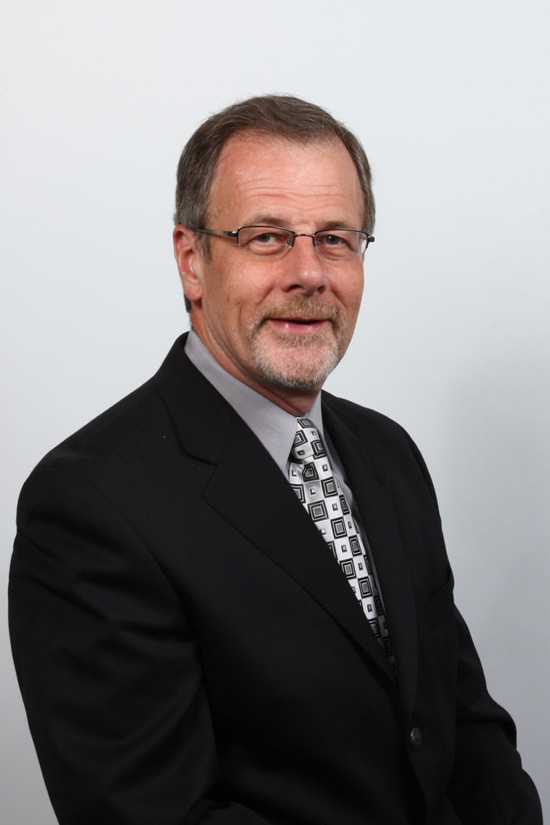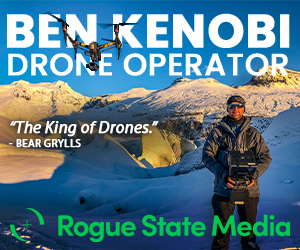Broadcast News
13/02/2015
New Developments Emerge At SMPTE Technology Committee Meetings

The Society of Motion Picture and Television Engineers (SMPTE) holds quarterly meetings of its Technology Committees (TC), and the latest of these took place in December 2014, when nine SMPTE TCs and 12 subgroups gathered at The Walt Disney Studios in Burbank, California. Alan Lambshead, SMPTE Standards Vice-President, reports.
More than 100 SMPTE members from all over the world attended in person, while an equal number participated via remote access. Their TC meetings resulted in a number of notable developments.
High Dynamic Range (HDR) Video Projects – The topic of HDR has gained importance with the recognition that the next step beyond high definition television (HDTV) requires improvement beyond pixel count. Improvements to parameters such as colour gamut, displayed dynamic range, frame rates, and electro-optical transfer function all contribute to the improved viewing experience that is needed to justify launching new services.
SMPTE now has a Study Group (SG) compiling a report on the HDR ecosystem, and a new project is set to define dynamic metadata for colour transforms of HDR and wider colour gamut images.
Two SMPTE HDR projects have recently published two new standards: 'Standard (ST) 2084 – High Dynamic Range Electro-Optical Transfer Function of Mastering Reference Displays' and 'ST 2086 – Mastering Display Colour Volume Metadata Supporting High Luminance and Wide Colour Gamut Images'. A third document in this set, 'ST 2085 – Color Differencing for High Luminance and Wide Colour Gamut Images', is now under development.
High Frame Rate (HFR) Projects – From the SMPTE meetings arose a new project that will create a standard specifying time address for HFR and its data structure in the ancillary data space. The standard will be extensible to cover rates of up to 960 frames per second (fps).
Video Compression (VC) Standards – SMPTE has standardised five VC standards: VC-1 to VC-5. Current work on VC standards includes the following:
Development of a suite of documents defining the VC-5 compression system (developed from a GoPro system). Two parts of the suite have been published, and two more are close to publication. Current work has switched to a standard defining VC-5 mapping in the Material eXchange Format (MXF) generic container. Three additional documents are planned for the suite.
The addition of 'image resolution independence' to the list of VC-3 capabilities through the revision of ST 2019-1 and the inclusion of new bit patterns for conformance testing in Recommended Practice (RP) 2019-2.
The additions are backwards-compatible, and no current features are deprecated. This is a newly launched project, awaiting the formation of a drafting group. The project proponent explained that the revision would permit pixel resolutions from 1x1 to 16384x16384, with added support for 12 bits, Recommendation (Rec.) International Telecommunications Union (ITU)-R BT.2020 colour space. A separate project has also been launched in TC-31FS to update ST 2019-4 to support this feature in MXF.
Amendment and revision to two VC-2 documents (developed from BBC's Dirac Pro system). One project adds a high-quality profile for archive and production; the other is a clarification of a published VC-2 document.
Cinema Sound Systems Projects – In October 2014, SMPTE published the report 'B-Chain Frequency and Temporal Response Analysis of Theatres and Dubbing Stages', developed by a Drafting Group within this TC.
This substantial report is available here.
A project is also under way to develop a 'Calibration Reference Wideband Pink Noise Signal and Test File'. Examination of various 'reference' noise files has revealed inconsistency in both root mean square (RMS) and peak amplitude values. This group will create a pink-noise calibration standard and produce a reference pink-noise .wav file and a digital cinema package (DCP) containing the file. The pink noise defined in ST 202:2010 and RP 200:2012 will be used, and the new standard will specify the algorithm used to generate the pink-noise file. The draft standard and the signal-generation algorithm are well-advanced. Work in the past quarter has focused on setting a level (around -18.5dbFS) that demonstrates good agreement with Dolby DMU noise.
Another project group is developing the RP 'Digital Cinema Sound System Setup and Calibration'. The TC also has a Working Group (WG) on the interoperability of immersive sound systems in digital cinema. Its goal is to standardise a single object-based distribution file format and related protocols for interoperable playback into a variety of theatre speaker configurations. Current WG projects are focused on immersive audio metadata.
Open Binding Technology for Persistent Content Identification in Audio/Video (A/V) Essence – Work on open binding technology for persistent content identification in A/V essence has its foundations in the 'Open Binding of IDs to Audiovisual Essence Report', which is available here.
The project will develop an open binding technology standard for embedding end-to-end persistent content identifiers into audio/video essence in a way that survives processing, compression, and distribution. The group's first task is to draft a request for proposals (RFP) for technology that could be the basis for the standard.
Network Based Synchronisation for the Professional Broadcast Environment – Two documents defining a system for distributing synchronisation packets over a data network are nearing publication. 'ST 2059-2 – Precision Time Protocol SMPTE Profile for Time and Frequency Synchronisation in a Professional Broadcast Environment' defines the behaviour of the master. 'ST 2059-1 – The SMPTE Epoch and Generation and Alignment of Interface Signals' defines the behaviour of the slaves, allowing them to create any synchronised video, audio, or time code signal.
The system uses a SMPTE profile for the Precision Time Protocol (IEEE 1588 v2) that provides acceptable lock-up time, jitter, and accuracy while providing metadata that allows time code generators to make adjustments for time discontinuities such as leap seconds and the change from daylight savings time to standard time.
Participating in the SMPTE Standards Process: SMPTE is a professional membership association and the preeminent leader in the advancement of the art, science, and craft of the image, sound, and metadata ecosystem, worldwide. An internationally recognised and accredited organisation, SMPTE advances moving-imagery education and engineering across the communications, technology, media, and entertainment industries. SMPTE is the only organisation that connects the areas of motion-imaging research, standardisation, education, and business success. Since its founding in 1916, SMPTE has published the SMPTE Motion Imaging Journal and developed more than 800 standards, recommended practices, and engineering guidelines.
Altera in San Jose, California, will host the next quarterly standards meetings, from 2-5 March. Randwick Technical and Further Education (Randwick TAFE) will host meetings from 7-10 July in Sydney, Australia, in conjunction with the biennial event, SMPTE15 Conference and Exhibition.
Anyone interested in the standards process is welcome to join the SMPTE standards community. A detailed report from the December meetings and more information about participating is available here.
The article is also available to read in BFV online.
(IT/JP)
More than 100 SMPTE members from all over the world attended in person, while an equal number participated via remote access. Their TC meetings resulted in a number of notable developments.
High Dynamic Range (HDR) Video Projects – The topic of HDR has gained importance with the recognition that the next step beyond high definition television (HDTV) requires improvement beyond pixel count. Improvements to parameters such as colour gamut, displayed dynamic range, frame rates, and electro-optical transfer function all contribute to the improved viewing experience that is needed to justify launching new services.
SMPTE now has a Study Group (SG) compiling a report on the HDR ecosystem, and a new project is set to define dynamic metadata for colour transforms of HDR and wider colour gamut images.
Two SMPTE HDR projects have recently published two new standards: 'Standard (ST) 2084 – High Dynamic Range Electro-Optical Transfer Function of Mastering Reference Displays' and 'ST 2086 – Mastering Display Colour Volume Metadata Supporting High Luminance and Wide Colour Gamut Images'. A third document in this set, 'ST 2085 – Color Differencing for High Luminance and Wide Colour Gamut Images', is now under development.
High Frame Rate (HFR) Projects – From the SMPTE meetings arose a new project that will create a standard specifying time address for HFR and its data structure in the ancillary data space. The standard will be extensible to cover rates of up to 960 frames per second (fps).
Video Compression (VC) Standards – SMPTE has standardised five VC standards: VC-1 to VC-5. Current work on VC standards includes the following:
Development of a suite of documents defining the VC-5 compression system (developed from a GoPro system). Two parts of the suite have been published, and two more are close to publication. Current work has switched to a standard defining VC-5 mapping in the Material eXchange Format (MXF) generic container. Three additional documents are planned for the suite.
The addition of 'image resolution independence' to the list of VC-3 capabilities through the revision of ST 2019-1 and the inclusion of new bit patterns for conformance testing in Recommended Practice (RP) 2019-2.
The additions are backwards-compatible, and no current features are deprecated. This is a newly launched project, awaiting the formation of a drafting group. The project proponent explained that the revision would permit pixel resolutions from 1x1 to 16384x16384, with added support for 12 bits, Recommendation (Rec.) International Telecommunications Union (ITU)-R BT.2020 colour space. A separate project has also been launched in TC-31FS to update ST 2019-4 to support this feature in MXF.
Amendment and revision to two VC-2 documents (developed from BBC's Dirac Pro system). One project adds a high-quality profile for archive and production; the other is a clarification of a published VC-2 document.
Cinema Sound Systems Projects – In October 2014, SMPTE published the report 'B-Chain Frequency and Temporal Response Analysis of Theatres and Dubbing Stages', developed by a Drafting Group within this TC.
This substantial report is available here.
A project is also under way to develop a 'Calibration Reference Wideband Pink Noise Signal and Test File'. Examination of various 'reference' noise files has revealed inconsistency in both root mean square (RMS) and peak amplitude values. This group will create a pink-noise calibration standard and produce a reference pink-noise .wav file and a digital cinema package (DCP) containing the file. The pink noise defined in ST 202:2010 and RP 200:2012 will be used, and the new standard will specify the algorithm used to generate the pink-noise file. The draft standard and the signal-generation algorithm are well-advanced. Work in the past quarter has focused on setting a level (around -18.5dbFS) that demonstrates good agreement with Dolby DMU noise.
Another project group is developing the RP 'Digital Cinema Sound System Setup and Calibration'. The TC also has a Working Group (WG) on the interoperability of immersive sound systems in digital cinema. Its goal is to standardise a single object-based distribution file format and related protocols for interoperable playback into a variety of theatre speaker configurations. Current WG projects are focused on immersive audio metadata.
Open Binding Technology for Persistent Content Identification in Audio/Video (A/V) Essence – Work on open binding technology for persistent content identification in A/V essence has its foundations in the 'Open Binding of IDs to Audiovisual Essence Report', which is available here.
The project will develop an open binding technology standard for embedding end-to-end persistent content identifiers into audio/video essence in a way that survives processing, compression, and distribution. The group's first task is to draft a request for proposals (RFP) for technology that could be the basis for the standard.
Network Based Synchronisation for the Professional Broadcast Environment – Two documents defining a system for distributing synchronisation packets over a data network are nearing publication. 'ST 2059-2 – Precision Time Protocol SMPTE Profile for Time and Frequency Synchronisation in a Professional Broadcast Environment' defines the behaviour of the master. 'ST 2059-1 – The SMPTE Epoch and Generation and Alignment of Interface Signals' defines the behaviour of the slaves, allowing them to create any synchronised video, audio, or time code signal.
The system uses a SMPTE profile for the Precision Time Protocol (IEEE 1588 v2) that provides acceptable lock-up time, jitter, and accuracy while providing metadata that allows time code generators to make adjustments for time discontinuities such as leap seconds and the change from daylight savings time to standard time.
Participating in the SMPTE Standards Process: SMPTE is a professional membership association and the preeminent leader in the advancement of the art, science, and craft of the image, sound, and metadata ecosystem, worldwide. An internationally recognised and accredited organisation, SMPTE advances moving-imagery education and engineering across the communications, technology, media, and entertainment industries. SMPTE is the only organisation that connects the areas of motion-imaging research, standardisation, education, and business success. Since its founding in 1916, SMPTE has published the SMPTE Motion Imaging Journal and developed more than 800 standards, recommended practices, and engineering guidelines.
Altera in San Jose, California, will host the next quarterly standards meetings, from 2-5 March. Randwick Technical and Further Education (Randwick TAFE) will host meetings from 7-10 July in Sydney, Australia, in conjunction with the biennial event, SMPTE15 Conference and Exhibition.
Anyone interested in the standards process is welcome to join the SMPTE standards community. A detailed report from the December meetings and more information about participating is available here.
The article is also available to read in BFV online.
(IT/JP)
Top Related Stories
Click here for the latest broadcast news stories.
13/11/2023
SMPTE Publications And Standards To Move To SMPTE.org
SMPTE® has announced that SMPTE publications and standards accessible as part of the Society's individual and organisational membership options will b
SMPTE Publications And Standards To Move To SMPTE.org
SMPTE® has announced that SMPTE publications and standards accessible as part of the Society's individual and organisational membership options will b
10/08/2018
SMPTE Previews IBC Presence
SMPTE is preparing for its trip to the upcoming IBC Show in Amsterdam, with a host of Big Screen and Standard sessions including "HDR Focus: 'Blue Pla
SMPTE Previews IBC Presence
SMPTE is preparing for its trip to the upcoming IBC Show in Amsterdam, with a host of Big Screen and Standard sessions including "HDR Focus: 'Blue Pla
05/02/2016
SMPTE Unveils 2016 Directors And Governors-At-Large
The Society of Motion Picture and Television Engineers (SMPTE) Board of Governors has named the its 2016 directors and appointed two new governors-at-
SMPTE Unveils 2016 Directors And Governors-At-Large
The Society of Motion Picture and Television Engineers (SMPTE) Board of Governors has named the its 2016 directors and appointed two new governors-at-
14/03/2018
SMPTE To Have Huge Presence At NAB 2018
SMPTE is to have a huge presence at the 2018 NAB Show with the 'Future of Cinema Conference', IP showcase, alongside its booth and members. 2018 NAB S
SMPTE To Have Huge Presence At NAB 2018
SMPTE is to have a huge presence at the 2018 NAB Show with the 'Future of Cinema Conference', IP showcase, alongside its booth and members. 2018 NAB S
23/01/2025
SMPTE Selects Raymond Yeung To Serve As Standards VP
SMPTE® has announced that Raymond Yeung is taking over the role of standards vice president for the Society. Yeung began his tenure on 01 January and
SMPTE Selects Raymond Yeung To Serve As Standards VP
SMPTE® has announced that Raymond Yeung is taking over the role of standards vice president for the Society. Yeung began his tenure on 01 January and
09/05/2023
Sally Hattori Appointed SMPTE Standards VP
SMPTE® has announced that SMPTE Fellow Sally Hattori has accepted the position of SMPTE standards vice president, a role in which she is directing and
Sally Hattori Appointed SMPTE Standards VP
SMPTE® has announced that SMPTE Fellow Sally Hattori has accepted the position of SMPTE standards vice president, a role in which she is directing and
11/01/2022
Florian Schleich Elected To Serve As SMPTE Standards Vice President
SMPTE® has announced that Florian Schleich has been elected to serve as SMPTE standards vice president. In this role, he will be directing and supervi
Florian Schleich Elected To Serve As SMPTE Standards Vice President
SMPTE® has announced that Florian Schleich has been elected to serve as SMPTE standards vice president. In this role, he will be directing and supervi
26/09/2018
SMPTE Publishes ST 2098 Standards For Immersive Audio
SMPTE® has announced the publication of new SMPTE ST 2098 standards for immersive audio. The Society has published ST 2098-1:2018, Immersive Audio Met
SMPTE Publishes ST 2098 Standards For Immersive Audio
SMPTE® has announced the publication of new SMPTE ST 2098 standards for immersive audio. The Society has published ST 2098-1:2018, Immersive Audio Met
10/07/2018
SMPTE Publishes Standards For Binding IDs To Media Assets
SMPTE® has published standards for binding Ad-IDs to commercials and Entertainment ID Registry (EIDR) codes to programming content. The standards spec
SMPTE Publishes Standards For Binding IDs To Media Assets
SMPTE® has published standards for binding Ad-IDs to commercials and Entertainment ID Registry (EIDR) codes to programming content. The standards spec
11/12/2017
SMPTE Publishes ST 2110 Standards
The first documents of the SMPTE ST 2110 standards suite are now available, it has been announced. SMPTE has published the first standards within SMPT
SMPTE Publishes ST 2110 Standards
The first documents of the SMPTE ST 2110 standards suite are now available, it has been announced. SMPTE has published the first standards within SMPT
19/09/2017
SMPTE Approves ST 2110 Standards
SMPTE has approved the first standards within SMPTE ST 2110, Professional Media Over Managed IP Networks. The new standards suite specifies the carria
SMPTE Approves ST 2110 Standards
SMPTE has approved the first standards within SMPTE ST 2110, Professional Media Over Managed IP Networks. The new standards suite specifies the carria
02/12/2015
SMPTE Names Director Of Standards
Howard Lukk is to join the Society of Motion Picture and Television Engineers (SMPTE) staff as the Society's new director of standards. Over the comin
SMPTE Names Director Of Standards
Howard Lukk is to join the Society of Motion Picture and Television Engineers (SMPTE) staff as the Society's new director of standards. Over the comin
20/10/2014
Colorfront To Set New Performance Standards At SMPTE 2014
Colorfront is to set new performance standards and demonstrate a host of features for Ultra High Definition Television (UHDTV) post production, and IM
Colorfront To Set New Performance Standards At SMPTE 2014
Colorfront is to set new performance standards and demonstrate a host of features for Ultra High Definition Television (UHDTV) post production, and IM
13/10/2014
SMPTE Standards Ready To Boost 'Wow' Factor
Current study and standards work is paving the way toward a richer, more immersive theatre experience, writes Brian Vessa, Chair of SMPTE Cinema Sound
SMPTE Standards Ready To Boost 'Wow' Factor
Current study and standards work is paving the way toward a richer, more immersive theatre experience, writes Brian Vessa, Chair of SMPTE Cinema Sound
07/06/2007
Wilkinson To Present HD Masters 2007 SMPTE Standards Workshop
The organisers of the HD Masters 2007 Conference have named Jim Wilkinson to present a bonus workshop at the conference. Wilkinson is presenting this
Wilkinson To Present HD Masters 2007 SMPTE Standards Workshop
The organisers of the HD Masters 2007 Conference have named Jim Wilkinson to present a bonus workshop at the conference. Wilkinson is presenting this















